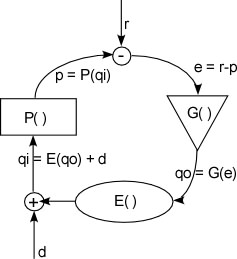( Gavin
Ritz 2010.05.19.20.10NZT)
[From
Rick Marken (2010.05.18.2330)]
Bill Powers
(2010.05.18.0911 MDT)–Rick says he doesn’t care if anyone else accepts PCT, but I do
Well, for the record, what I said is: I am not interested in getting people to
understand that PCT is revolutionary. I am interested in getting people to
understand PCT. And I certainly would like to see people accept PCT. But I’ve
seen too many people accept PCT only to find that they accept something quite
different than what I understand PCT to be. The only problem with that (from my
perspective) is that I end up without anyone to play PCT with (well, do
research with). It’s like having people accept being your partner at
“bridge” only to find that what they call “bridge” is what
you call “gin rummy”. This makes for bridge partnerships that are as
unpleasant as some of the “partnerships” we experience with people
who “accept” PCT.
Actually Rick you should take full accountability
for this situation. You chase people away who want to understand, and then you moan
about the situation as above.
Further you complicate the situation to
such an extent that I sometimes think this is exactly what you really want. What exactly is your
controlled variable in this situation only you would know?
I have gone back to some dialogue you had
with us on another list, this is more than 10 years ago, and it wasn’t much
different.
I have taken a real interest in PCT
and have plumbed some of its depths and limits but you have shown no interest other
than a whole lot of negative responses (I cannot say what they really are
because I do not understand what your controlled variables are).
I have brought some real interesting
things to the table e.g. it is impossible to have a zero reference signal at
the highest level, and provided a very good reason why? Your responses were not
very positive, well actually very unimpressive.
PCT will not grow if this behaviour continues;
in fact a lot of behavior on this list is much to be desired for whatever
reason. I cannot hope to fathom.
I have tried to be positive and look at
many aspects of PCT; I have probably bought every book on this subject and let
me tell you some of it very very good. Runkel’s casting nets and testing
of Specimens is one of the most robust open books I have read in years, but a
theory needs more than just great books, it needs people with certain characteristics,
those that are inclusive, helpful, friendly, supportive, open, firm, understanding,
I can go on.
I use a mix of both methods of information
gathering and use, in many business situations, but I don’t like sharing
them here, because of the negative responses.
What you need to do is to change your perceptual
view.
I see a lot of people who are chased away from
PCT, pity.
Kind regards
Gavin
